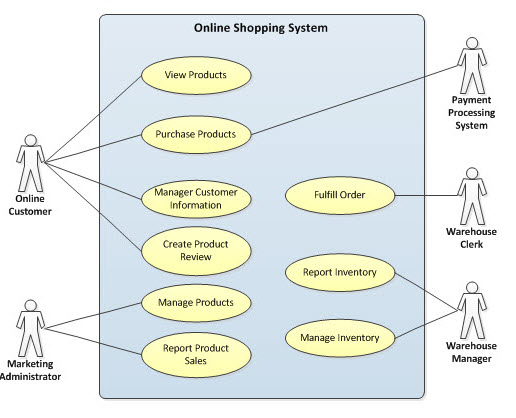Earned value management (EVM), earned value project management, or earned value performance management (EVPM) is a project management technique for measuring project performance and progress in an objective manner.
The Constructive Cost Model (COCOMO) is a procedural software cost estimation model developed by Barry W. Boehm. The model parameters are derived from fitting a regression formula using data from historical projects.

The standard error (SE) of a statistic is the standard deviation of its sampling distribution or an estimate of that standard deviation. If the statistic is the sample mean, it is called the standard error of the mean (SEM).
In digital circuit design, register-transfer level (RTL) is a design abstraction which models a synchronous digital circuit in terms of the flow of digital signals (data) between hardware registers, and the logical operations performed on those signals.
Cost estimation in software engineering is typically concerned with the financial spend on the effort to develop and test the software, this can also include requirements review, maintenance, training, managing and buying extra equipment, servers and software. Many methods have been developed for estimating software costs for a given project.
SEER for Software (SEER-SEM) is an algorithmic project management software application designed specifically to estimate, plan and monitor the effort and resources required for any type of software development and/or maintenance project. SEER, which comes from the noun, referring to one having the ability to foresee the future, relies on parametric algorithms, knowledge bases, simulation-based probability, and historical precedents to allow project managers, engineers, and cost analysts to accurately estimate a project's cost schedule, risk and effort before the project is started.
In statistics, resampling is any of a variety of methods for doing one of the following:
- Estimating the precision of sample statistics by using subsets of available data (jackknifing) or drawing randomly with replacement from a set of data points (bootstrapping)
- Exchanging labels on data points when performing significance tests
- Validating models by using random subsets
The function point is a "unit of measurement" to express the amount of business functionality an information system provides to a user. Function points are used to compute a functional size measurement (FSM) of software. The cost of a single unit is calculated from past projects.
In software development, test effort refers to the expenses for tests. There is a relation with test costs and failure costs. Some factors which influence test effort are: maturity of the software development process, quality and testability of the testobject, test infrastructure, skills of staff members, quality goals and test strategy.
Software sizing or Software size estimation is an activity in software engineering that is used to determine or estimate the size of a software application or component in order to be able to implement other software project management activities. Size is an inherent characteristic of a piece of software just like weight is an inherent characteristic of a tangible material.
Forest inventory is the systematic collection of data and forest information for assessment or analysis. An estimate of the value and possible uses of timber is an important part of the broader information required to sustain ecosystems. When taking forest inventory the following are important things to measure and note: species, diameter at breast height (DBH), height, site quality, age, and defects. From the data collected one can calculate the number of trees per acre, the basal area, the volume of trees in an area, and the value of the timber. Inventories can be done for other reasons than just calculating the value. A forest can be cruised to visually assess timber and determine potential fire hazards and the risk of fire. The results of this type of inventory can be used in preventive actions and also awareness. Wildlife surveys can be undertaken in conjunction with timber inventory to determine the number and type of wildlife within a forest. The aim of the statistical forest inventory is to provide comprehensive information about the state and dynamics of forests for strategic and management planning. Merely looking at the forest for assessment is called taxation.
In software development, effort estimation is the process of predicting the most realistic amount of effort required to develop or maintain software based on incomplete, uncertain and noisy input. Effort estimates may be used as input to project plans, iteration plans, budgets, investment analyses, pricing processes and bidding rounds.
Weighted Micro Function Points (WMFP) is a modern software sizing algorithm which is a successor to solid ancestor scientific methods as COCOMO, COSYSMO, maintainability index, cyclomatic complexity, function points, and Halstead complexity. It produces more accurate results than traditional software sizing methodologies, while requiring less configuration and knowledge from the end user, as most of the estimation is based on automatic measurements of an existing source code.
Methodology to evaluate complexity and cost of developing and maintaining application software for creating information systems - this is an algorithmic model assessment value software, developed by a consortium of Kazakh IT companies: Kazakhstan Association of IT-companies Company System Studies "Factor" and JSC "National Information Technologies. Method allows assessment of complexity and cost of development of [software] in the early stages and is based on an assessment of the functional size of software.

Estimation is the process of finding an estimate, or approximation, which is a value that is usable for some purpose even if input data may be incomplete, uncertain, or unstable. The value is nonetheless usable because it is derived from the best information available. Typically, estimation involves "using the value of a statistic derived from a sample to estimate the value of a corresponding population parameter". The sample provides information that can be projected, through various formal or informal processes, to determine a range most likely to describe the missing information. An estimate that turns out to be incorrect will be an overestimate if the estimate exceeded the actual result, and an underestimate if the estimate fell short of the actual result.

The Unified Code Counter (UCC) is a comprehensive software lines of code counter produced by the USC Center for Systems and Software Engineering. It is available to the general public as open source code and can be compiled with any standard ANSI C++ compiler.
SNAP is the acronym for “Software Non-functional Assessment Process,” a measurement of non-functional software size. The SNAP sizing method complements ISO/IEC 20926:2009, which defines a method for the sizing of functional user requirements. SNAP is a product of the International Function Point Users Group (IFPUG), and is sized using the “Software Non-functional Assessment Practices Manual,” (APM) now in version 2.4. The SNAP methodology has the IEEE standard IEEE2430-2019.
Resource estimation is used to determine and define the ore tonnage and grade of a geological deposit, from the developed block model. There are different estimation methods used for different scenarios dependent upon the ore boundaries, geological deposit geometry, grade variability and the amount of time and money available. A typical resource estimation involves the construction of a geological. Resource model with data from various sources. Depending on the nature of the information and whether the data is hard copy or computerized, the principal steps of computer resource estimation are:
- Creation, standardization and validation of the database.
- Section plotting and interactive geological modeling.
- Geostatistical analysis.
- Block modeling and block estimation.
In Agile software development, the Fibonacci scale consists of a sequence of numbers used for estimating the relative size of user stories in points. Agile Scrum is based on the concept of working iteratively in short sprints, typically two weeks long, where the requirements and development are continuously being improved. The Fibonacci sequence consists of numbers that are the summation of the two preceding numbers, starting with [0, 1]. Agile uses the Fibonacci sequence to achieve better results by reducing complexity, effort, and doubt when determining the development time required for a task, which can range from a few minutes to several weeks.
Risk score is the name given to a general practice in applied statistics, bio-statistics, econometrics and other related disciplines, of creating an easily calculated number that reflects the level of risk in the presence of some risk factors.



